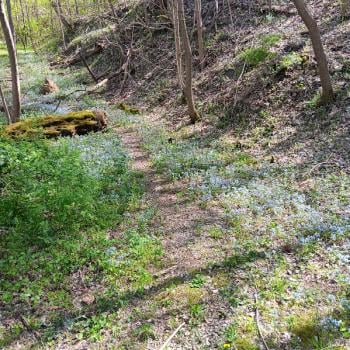Editors' Note: This article is part of the Patheos Public Square on the Future of Faith in America: Eastern Religions. Read other perspectives here.
Daoism (Taoism) is an indigenous Chinese religion deeply rooted in traditional Chinese culture, while Daoists (Taoists) are, first and foremost, adherents of Daoism. This includes a recognition of the Dao 道 (Tao; Way) as the sacred or ultimate concern, with "Dao" being a Chinese character as well as a Daoist cosmological and theological concept.
The history of modern Daoism is tumultuous, involving devastation, diminishment, and subsequent revitalization, and globalization. In terms of understanding contemporary American interest, it is important to recognize legacies of colonialism, missionization, and Orientalism, specifically the 19th-century Protestant Christian construction of Daoism. The history of "American Daoism" or "Daoism in America" is thus intricately tied to the history of modern China, including the end of the dynastic system and emergence of a secular nation-state (1912), the Chinese Communist takeover (1949) and systematic attempt to destroy religion ("feudal superstition") and traditional Chinese culture (1966-1976), as well as the subsequent liberalization and revitalization (1978-present).
In my way of thinking about Daoism, the early modern period corresponds to 1912-1978, while the late modern period corresponds to 1978-present (see Komjathy 2013; 2014). It is only at the beginning of the late modern period that we may discuss "globalized Daoism," especially if we understand Daoism as shorthand for Daoist adherents, communities, and their religious expressions. Here "global Daoism" refers to the transformation of "Chinese Daoism" into a multi-cultural, multi-ethnic, multi-linguistic, and transnational "world religion," a process that is still in its formative moments. While global Daoism is rooted in Chinese Daoism as source-tradition, it transcends that indigenous Chinese religion in various ways.
We may, in turn, chart the globalization of Daoism, and Daoism in America by extension, along a spectrum: from tradition/transmission through innovation/adaptation to appropriation/fabrication. The vast majority of phenomena identified as "Daoist" in the United States falls under the latter, although there is often a rhetoric of "tradition" and "lineage" at work. This includes various appropriative agendas on the part of hybrid spiritualists in the name of "personal spirituality" (read: spiritual colonialism). As the bumper sticker has it: "That was Zen; this is Tao." That is, at present, the popularity of "Daoism" in America largely rests on a series of fabrications, fictions, and fantasies, although there are also individuals with authentic affinities, ordained and lineage-based Daoist priests, as well as tradition-based communities. In this brief reflection, I will not single out particular people, communities, and organizations (see Komjathy 2003a; 2003b; 2004; 2006). Rather, I will emphasize emerging and recurring patterns.
As mentioned, the dominant American engagement with "Daoism" is rooted in various colonialist, missionary, and Orientalist legacies, specifically 19th-century Protestant constructions. The most entrenched is the inaccurate and outdated claim that there are "two Daoisms," namely, so-called "philosophical Daoism" and so-called "religious Daoism." Along parallel lines, many self-identified American Daoists, or "Tao-ists," in keeping with their own self-promoting presentations, inaccurately believe that being a Daoist centers on "believing in the Dao" and "going with the flow" (read: following one's own personal desires).
Of course, it is also important to consider earlier Western and American engagements with "Daoism" through associated religious texts (in translation) and vaguely understood ideas. There are various misconceptions about Daoism, including a conspiracy of ignorance, that hinder informed understanding, let alone authentic Daoist practice-realization (see Komjathy 2011a; 2011b). This includes the misidentification of various Chinese practices, such as Traditional Chinese Medicine (TCM), Qigong, and Taiji quan, as "Daoist."
Such constructions are found in popular publications, martial arts dojos, Oriental medical schools, as well as hybrid spiritualist and Qigong organizations. Here we must recognize that there are economic, ethical, psychological and socio-political dimensions to all of this. Many self-identified American "Daoist" teachers and communities have built their identities and livelihoods on such historical fictions. At the farthest end of the appropriation/fabrication end of the spectrum is a new religious movement (NRM) that I have referred to as "Popular Western Taoism" (PWT), with "Taoism" (intentionally and inaccurately) pronounced with a hard "t" sound (see Komjathy 2014). To use traditional Daoist categories, PWT has a different "lineage," one with little to no connection to Daoism as such. Some PWT adherents, following typical Orientalist logic, even absurdly suggest that they are practicing "original" or "pure Daoism," which the religious tradition supposedly lost.




